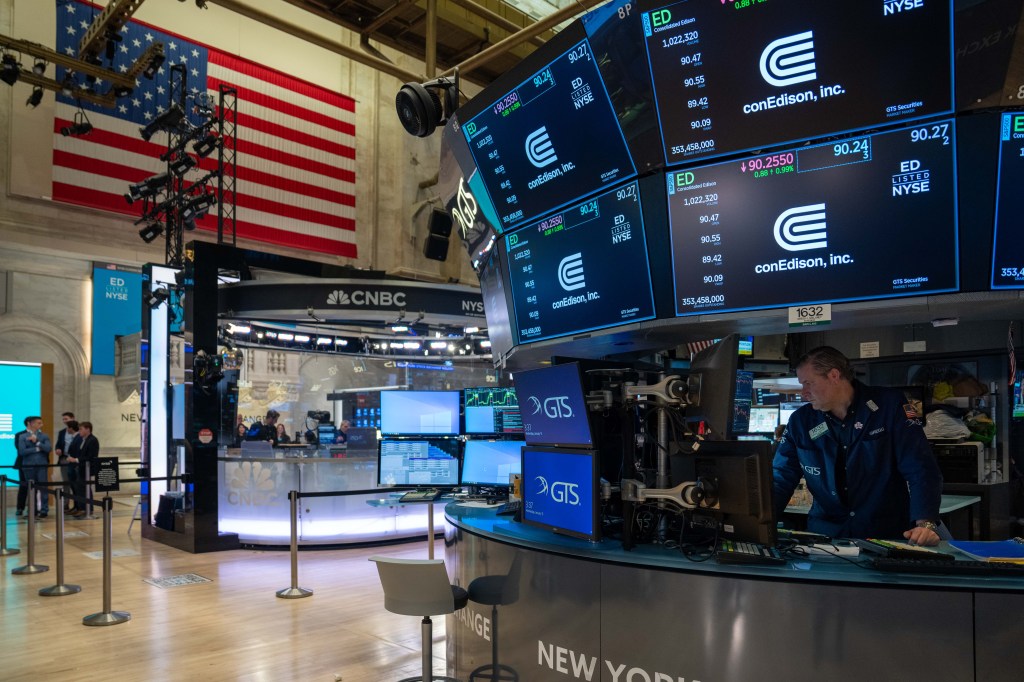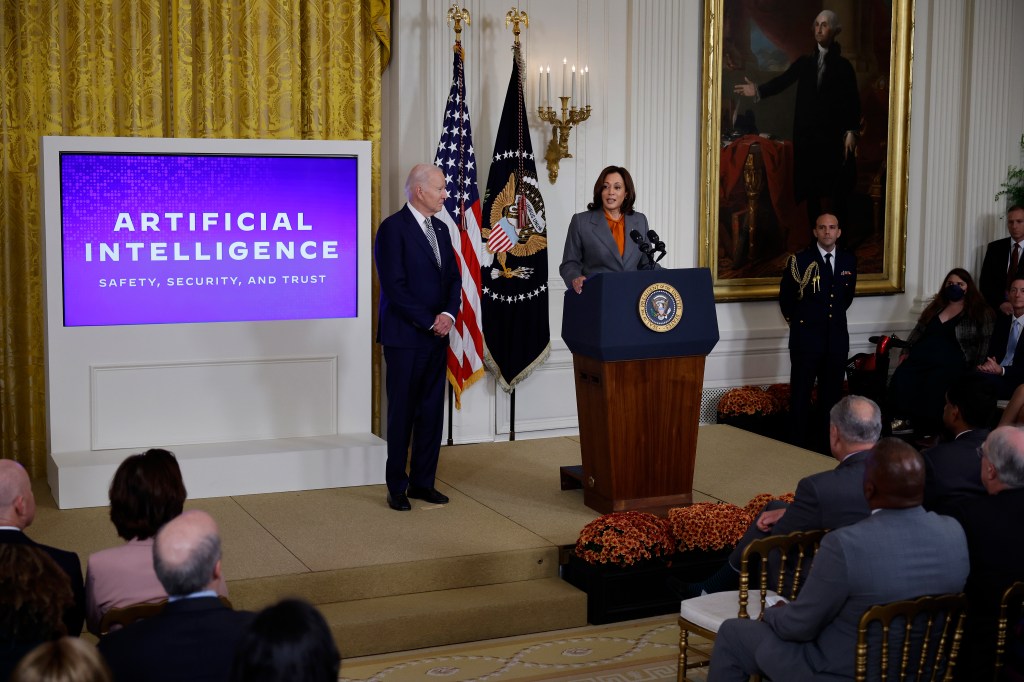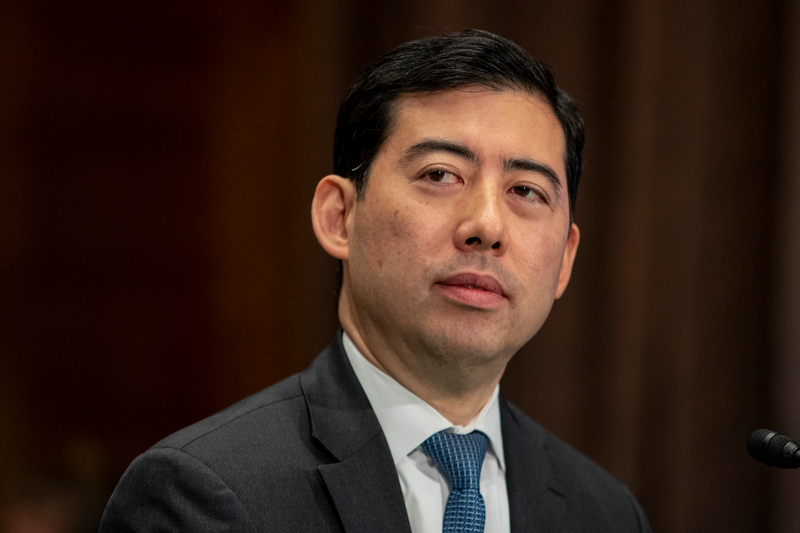JPMorgan has moved in to mop up at First Republic, and two separate regulators have issued reports flagging failings in the supervisory regime that contributed to the collapse of SVB and Signature banks.
JPMorgan said it will assume the insured and noninsured deposits of First Republic Banks, $92bn in total, plus purchase most of the bank’s assets, including about $173bn in loans and $30 billion in securities.
As part of the agreement, the FDIC will share losses with JPMorgan on First Republic’s loans. JPMorgan said it would receive $50bn in financing from the FDIC, and the regulator estimated that its insurance fund would take a hit of $13bn on the deal.
The San Francisco-based bank, the second-largest bank to fail in US history, lost $100bn in deposits in a March run following the collapse of SVB, a neighbor in the northern California Bay Area.
“Everyone should just take a deep breath.”
Jamie Dimon, Chief Executive, JPMorgan
First Republic already received $30bn in deposits from a group of America’s largest banks, but it was still ailing for several weeks afterward. Those deposits will be repaid after the deal closes, JPMorgan said.
The deal means JPMorgan, the largest bank in the US, will be even bigger.
The bank said it bid to help stabilize the financial system. “This part of the crisis is over,” JPMorgan Chief Executive Jamie Dimon said Monday. “Everyone should just take a deep breath.”
A number of banks bid for the deposits, and the FDIC called the process competitive and said the choice of JPMorgan was based on getting an offer that was projected to cost the deposit insurance fund the least – the main requirement in its awarding process.
First Republic’s 84 branches reopened Monday as part of JPMorgan during normal business hours, and customers will have full access to their deposits, the FDIC said.
Federal Reserve on SVB
In a report published Friday about the failure of Silicon Valley Bank (SVB), the Federal Reserve said banking supervisors failed to take early and sufficient action to address growing problems at the bank before it collapsed last month, signaling its intent to toughen rules on the industry. Michael Barrr, the Fed’s vice chair for supervision, said supervisors didn’t fully appreciate the extent of the vulnerabilities as SVB grew in size and complexity.
“Regulatory standards for SVB were too low, the supervision of SVB did not work with sufficient force and urgency, and contagion from the firm’s failure posed systemic consequences not contemplated by the Federal Reserve’s tailoring framework,” he said in the report. He said the Federal Reserve’s supervision and regulation regimes would be strengthened, based on what the Fed has learned.
Regulators took control of the Santa Clara, California-based bank on March 10. The collapse sparked a panic as a flurry of depositors withdrew their money from the institution – and two days later from another regional lender, New York-based Signature Bank.
The two collapses led to an intervention by financial regulators to protect uninsured depositors at both banks.
FDIC on Signature Bank
The Federal Deposit Insurance Commission (FDIC) issued a separate report on Friday analyzing its oversight of Signature; the FDIC was that bank’s primary regulator, while the Fed was the primary regulator for SVB.
The FDIC said that it was slow to escalate issues that it had identified with the bank’s management, but it put much of the blame on Signature, which it said grew too fast and wasn’t responsive enough when the FDIC raised concerns.
Also on Friday, and as a separate review, the New York Department of Financial Services (NYDFS) issued a report about the bank headquartered in its state, saying the way banks model liquidity risk – the risk pertaining to their ability to access available cash when needed – should be examined.
The NYDFS observed how Signature clients were able to withdraw money at rates and volumes that far outpaced the conservative assumptions based on something called the liquidity coverage ratio or LCR.
LCR is designed to ensure that banks hold a sufficient reserve of high-quality liquid assets to allow them to survive a period of significant liquidity stress lasting 30 calendar days.
One of the reasons a bank might not be able to keep up with its traditionally conservative assumptions with LCR is because the model assumptions have not kept pace with technological advancements in mobile banking or consumer behavior, allowing for the instant movements of money, the NYDFS said.
Key takeaways
The Fed’s report mentions four key takeaways about SVB:
- SVB’s board of directors and management failed to manage their risks.
- Supervisors did not fully appreciate the extent of the vulnerabilities as the bank grew in size and complexity.
- When supervisors did identify vulnerabilities, they did not take sufficient steps to ensure that SVB fixed those problems quickly enough.
- The Federal Reserve’s “tailoring approach” following the Economic Growth, Regulatory Relief, and Consumer Protection Act of 2018 and a shift in the stance of supervisory policy impeded effective supervision by reducing standards, increasing complexity, and promoting a less assertive supervisory approach.
Interestingly, the report highlights several other substantial, contributing risks.
Social media enabled depositors to instantly spread concerns about a bank run, and technology enabled immediate withdrawals of funding, the report notes. That squares with the NYDFS’s observations about the exacerbation of risk and LCR due to mobile banking and other tech tools, mentioned earlier.
Plus, as Barr had already noted in March, distress at one banking institution can have systemic consequences through contagion – where concerns about one firm spread to other firms – even if the firm is not extremely large, highly connected to other financial counterparties, or involved in critical financial services.
“While the proximate cause of SVB’s failure was a liquidity run, the underlying issue was concern about its solvency.”
Michael Barr, vice chair for supervision, Federal Reserve
Barr also said the experience underscores why strong bank capital matters. “While the proximate cause of SVB’s failure was a liquidity run, the underlying issue was concern about its solvency,” he said.
In the report, Barr highlights the need for institutions and regulators to ensure that supervisory protocols intensify at a pace that matches a firm’s growth and change in complexity, without a long transition period.
He also warns against complacency, saying that more than a decade of banking system stability and strong performance by banks of all sizes may have led bank executives to be overconfident and banking supervisors to be too accepting.
Novel activity supervisory group
Barr said the Federal Reserve has begun to build a dedicated novel activity supervisory group to focus on the risks of novel activities, such as fintech and crypto activities, as a complement to its existing supervisory teams.
“As we do so, we will identify whether there are other risk factors – such as high growth or concentration – that warrant additional supervisory attention,” he said.
This will better help the agency be attentive to the particular risks that firms with rapid growth, concentrated business models, or other special factors might pose, regardless of asset size.
And speaking of size, Barr said SVB’s failure was a sign that have stronger standards should apply to a broader set of firms – meaning not just to the largest ones. “As a result, we plan to revisit the tailoring framework, including to reevaluate a range of rules for banks with $100bn or more in assets,” he said.













